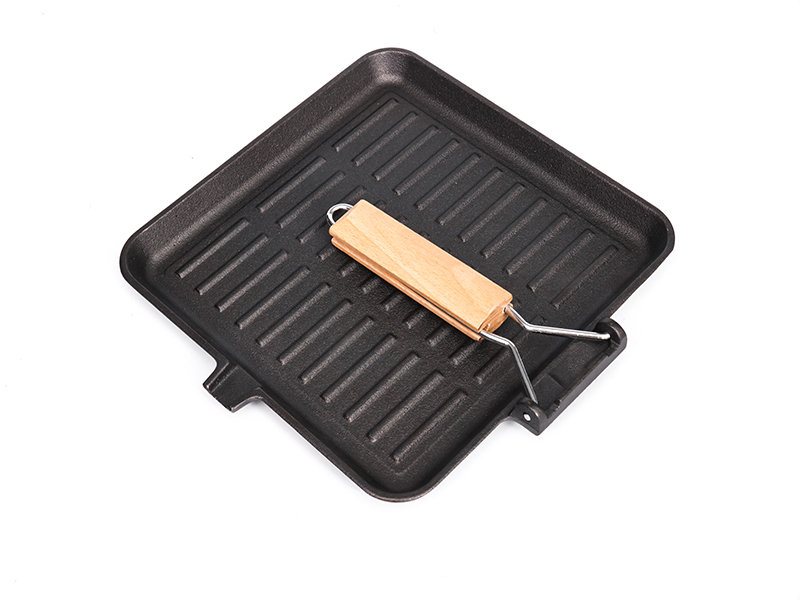
Cast iron skillets are practically indestructible, and they’ll last you a lifetime especially when it's taking proper care. Cast-iron skillets are naturally prone to rust, but even if it has turned bright orange, the pot absolutely can be fixed. The next time you find yourself staring down a rusty cast-iron skillet or dutch oven, try these simple steps to remove the rust.
Ignore those times you’ve been told to be gentle with your castiron skillet, the iron itself is virtually indestructible. Here, you’re going to remove all the rust and the seasoning.
1.When cast iron rust is allowed to build up, needing a rough scrubber to remove it, like abrasive scouring pads, a wire brush or a steel wool pad. Add a little hot water to help the process along. Scrub in small circles, focusing on the rustiest parts first, Continuing scrub until you see the original black iron emerge, then rinse that gunk off in the sink.
If simple scrubbing doesn't do much to remove rust, coat the entire skillet in a thin layer of baking soda or place a liberal amount of coarse salt in the pan, add a bit of warm water to make a paste, and then rub it around using a scrubber. If the rust is stubborn, try dish soap, because soap can eat away at the oily seasoning built up.
2.With the rust completely removed, Quickly dry the pan. Place the skillet on the stove and turn on the heat for a few minutes. Any lingering moisture will evaporate right off.
3.After the rust and seasoning have been removed, the metal will be exposed, meaning it's down to the bare iron. Now, you need to work quickly to prevent the iron from oxidizing (rusting) immediately--reseasoning.
Drop a tablespoon of vegetable oil on the pan and spread it around with your fingers or a paper towel. (Take care not to burn yourself on a warm skillet!). Oil the outside and the handle. Taking a folded napkin and wipe off the excess oil. Set your oven to 350 degrees and put some aluminum foil on the bottom rack, then pop the skillet in, upside down, on the upper rack for about 1 hour. Turn the oven off and leave the pan inside until it’s cool. The oil will bake into the pores of the pan, providing a non-stick finish.
Repeat this step a second time and you’ll have an almost glassy surface of seasoning.
4.After the rust and seasoning have been removed, the metal will be exposed, meaning it's down to the bare iron. Now, you need to work quickly to prevent the iron from oxidizing (rusting) immediately--reseasoning.
Drop a tablespoon of vegetable oil on the pan and spread it around with your fingers or a paper towel. (Take care not to burn yourself on a warm skillet!). Oil the outside and the handle. Taking a folded napkin and wipe off the excess oil. Set your oven to 400 degrees and put some aluminum foil on the bottom rack, putting a baking sheet on a rack below it to catch oil drips. then Leave it for an hour, then turn off the heat. Turn the oven off and leave the pan inside until it’s cool. The oil will bake into the pores of the pan, providing a non-stick finish. Highly recommend leaving a window open for this, as it’s going to get smoky. When you take it out, it should be black, smooth and ready to use.
